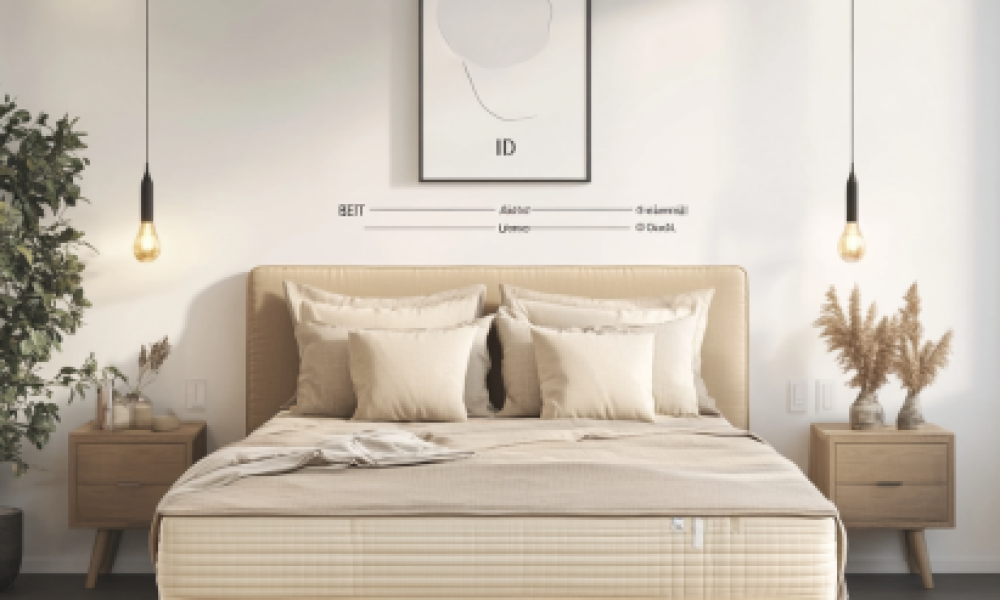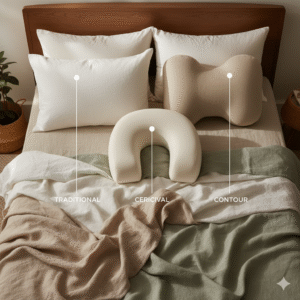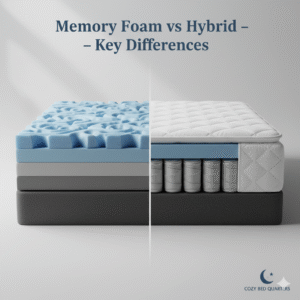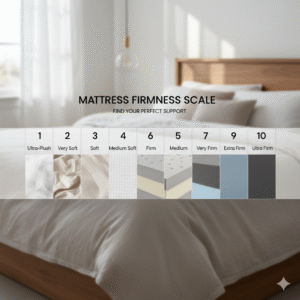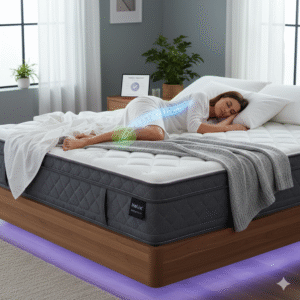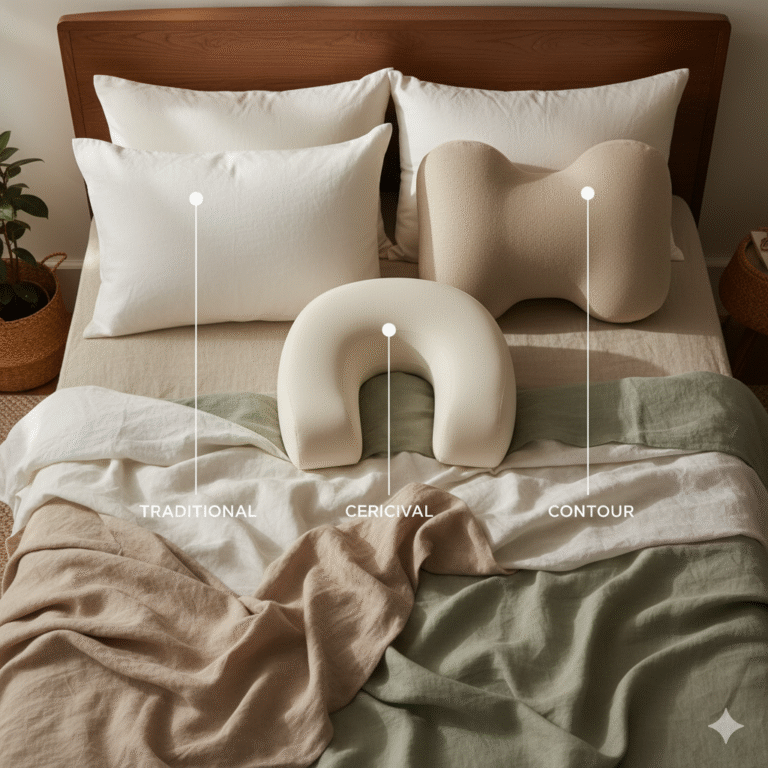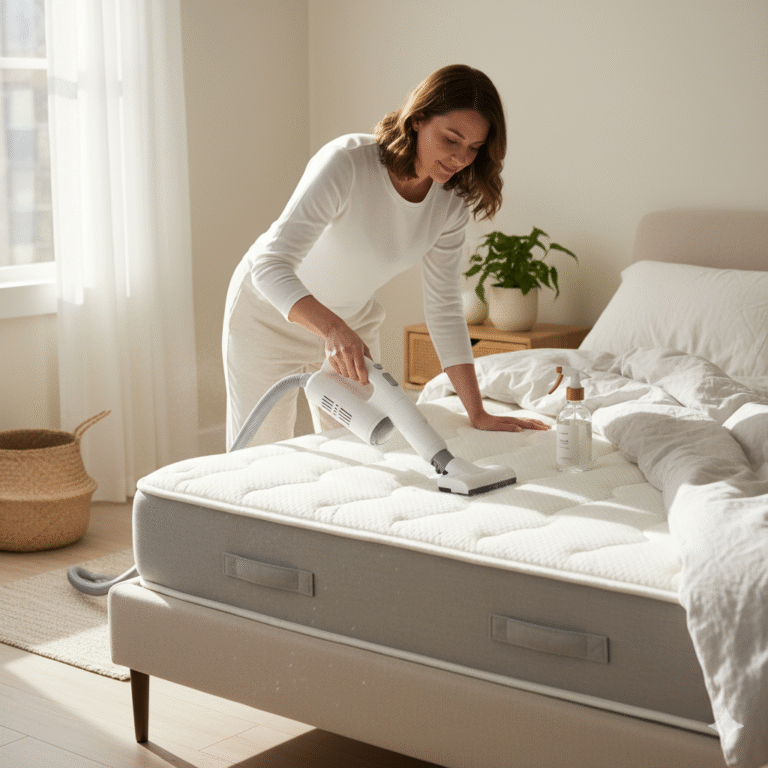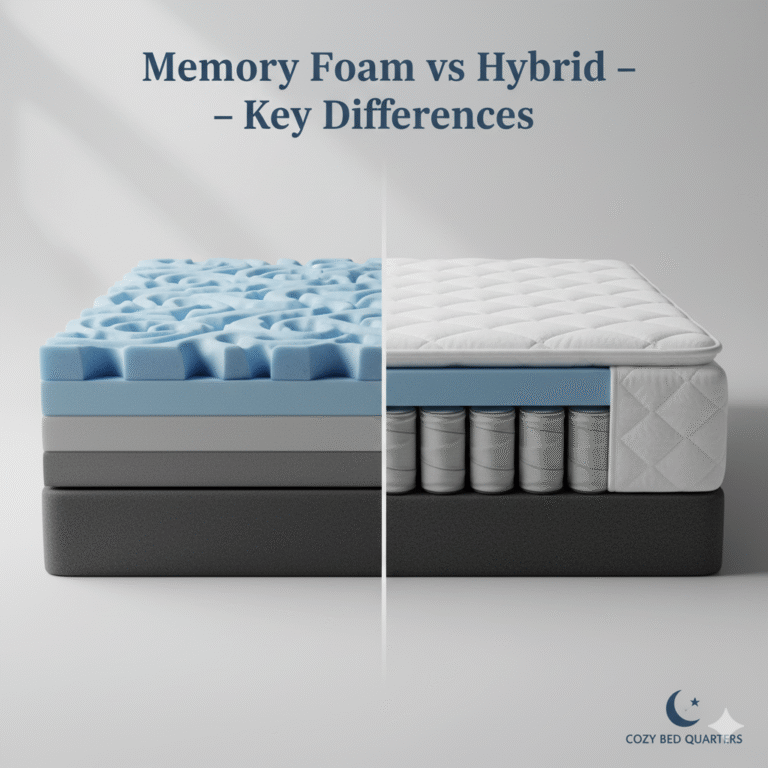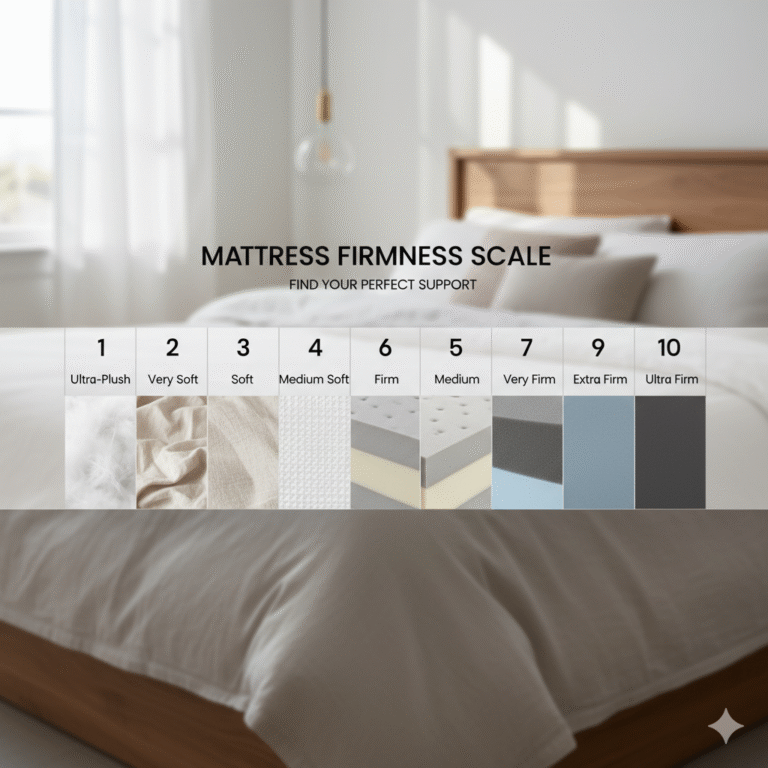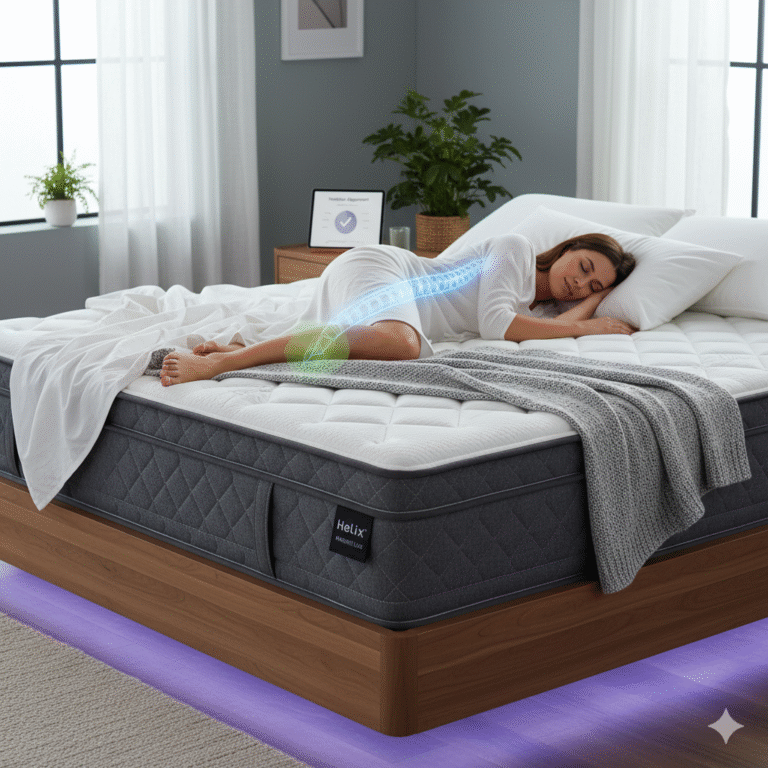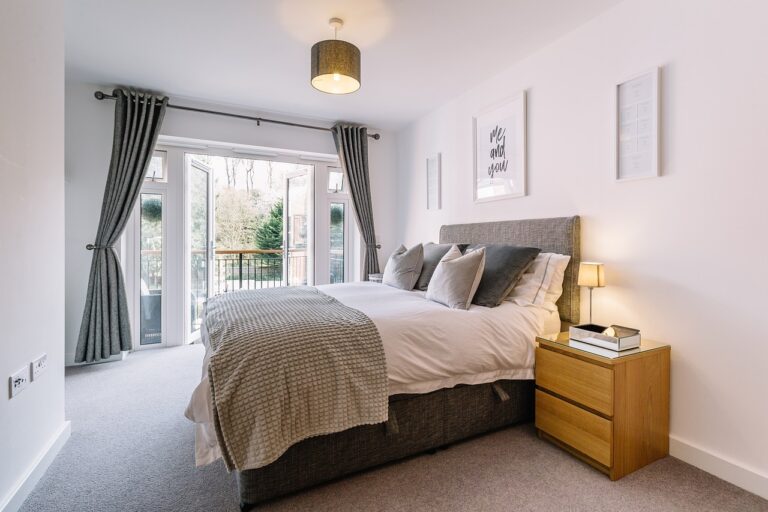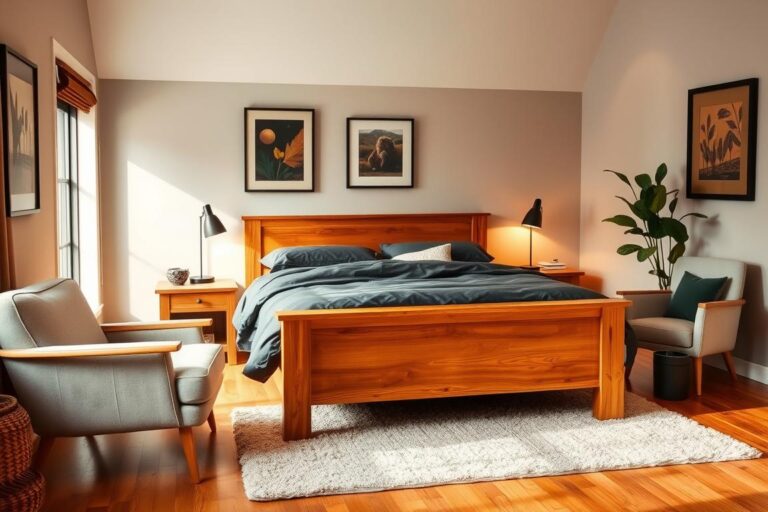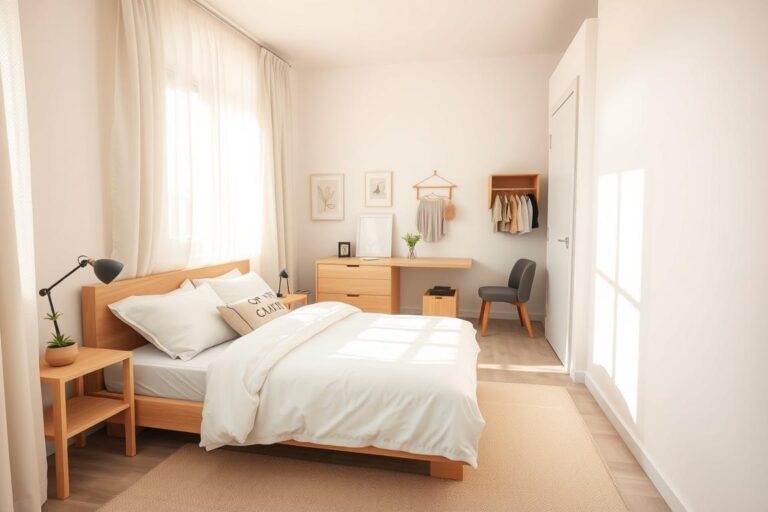Choosing among the many bed sizes can feel overwhelming, but it doesn’t have to be. This end-to-end guide explains standard and custom options, how much space each one truly needs, and the seven key factors that help you pick the best fit for your sleep, your room, and your lifestyle.
Bed Sizes: Complete Guide with 7 Key Factors to Choose the Best One
Key Takeaways: bed sizes
- Room fit first: Measure your clear floor space and pathways before falling in love with a size.
- Couple comfort: If you co-sleep with a partner, pets, or kids, size up for fewer sleep disturbances.
- Standard dimensions are consistent: Most bed sizes follow common measurements, but minor brand variation exists.
- Frames add footprint: Allow 2–6 extra inches for frames, headboards, and bedding layers.
- Plan long-term: Consider height, growth, and lifestyle changes (guests, pets, future kids).
Understanding Bed Sizes at a Glance
Answer first: Start with who sleeps in the bed, how much space your room allows, and your height; then match those needs to standardized dimensions.
Most households pick between Twin, Twin XL, Full, Queen, King, and California King. These bed sizes share widely recognized dimensions, making shopping simpler and ensuring bedding compatibility. Minor variations occur by brand, so always double-check product specs.
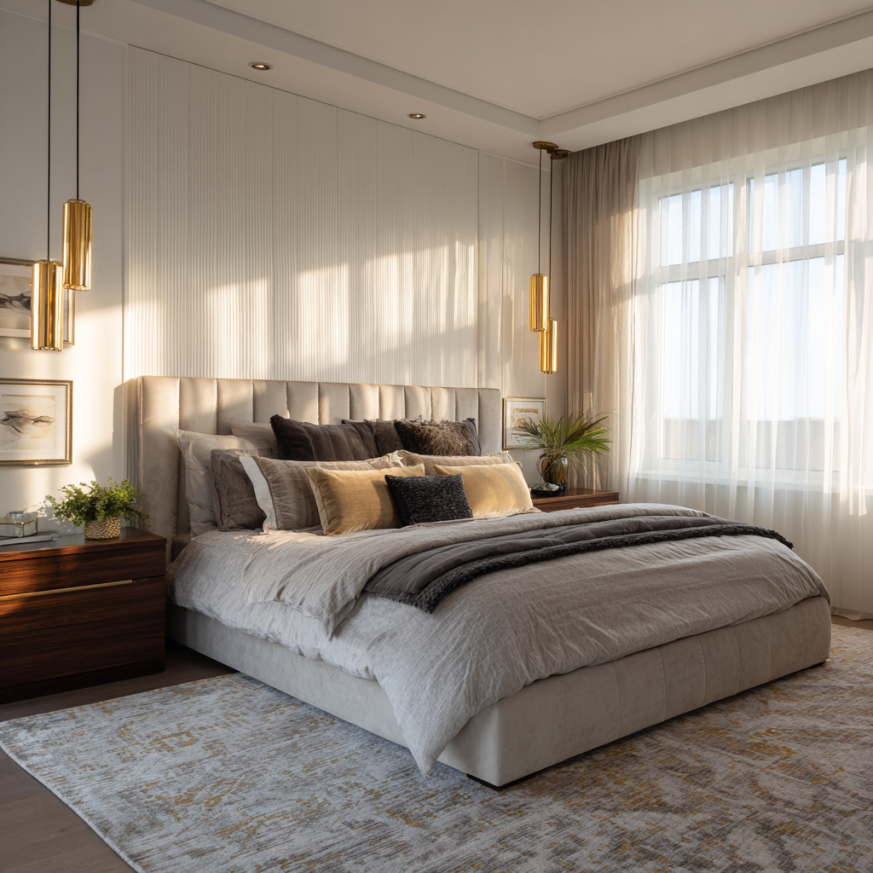
7 Key Factors to Choose the Best Bed Size
Answer first: The ideal size balances sleep comfort, room flow, and budget—here’s how to decide in minutes.
- Room dimensions & flow: Leave ~24 inches of clearance at the sides and foot, and ensure door and drawer swing space.
- Sleeper profile: Height, shoulder span, and sleep position matter; taller or restless sleepers benefit from more length/width.
- Partners, pets, kids: If anyone joins you, consider Queen as a minimum and King for fewer disruptions.
- Frame footprint: Platform, storage, and upholstered frames typically add 2–6 inches to length/width.
- Budget & bedding: Up-sizing increases cost for mattresses, frames, and eco-conscious sheets.
- Future needs: Anticipate growth, frequent guests, or co-sleeping changes.
- Doorways & stairs: Measure access paths to avoid delivery headaches.
Twin Bed (Single)
Answer first: Best for kids and tight rooms where maximizing floor space matters most.
- Dimensions: 38″ x 75″
- Best for: Children, small bedrooms, bunk beds, dorms
- Pros: Space-saving, easy to move, budget-friendly
- Cons: Too narrow/short for most adults
Choose a Twin if you’re optimizing a compact room or creating flexible layouts with storage. For taller teens, step up to Twin XL. For a quick comparison of standard bed sizes, see our
Mattress Size Comparison.

Twin XL Bed
Answer first: Same width as Twin with crucial extra length for taller sleepers and dorm setups.
- Dimensions: 38″ x 80″
- Best for: Tall teens, college dorms, small guest rooms
- Pros: Extra legroom; pairs to create a Split King
- Cons: Narrow for couples
Two Twin XLs equal a Split King—great for adjustable bases and personalized firmness. Verify fitted-sheet depth using Parachute’s size guide
(Parachute Fitted Sheet Guide).
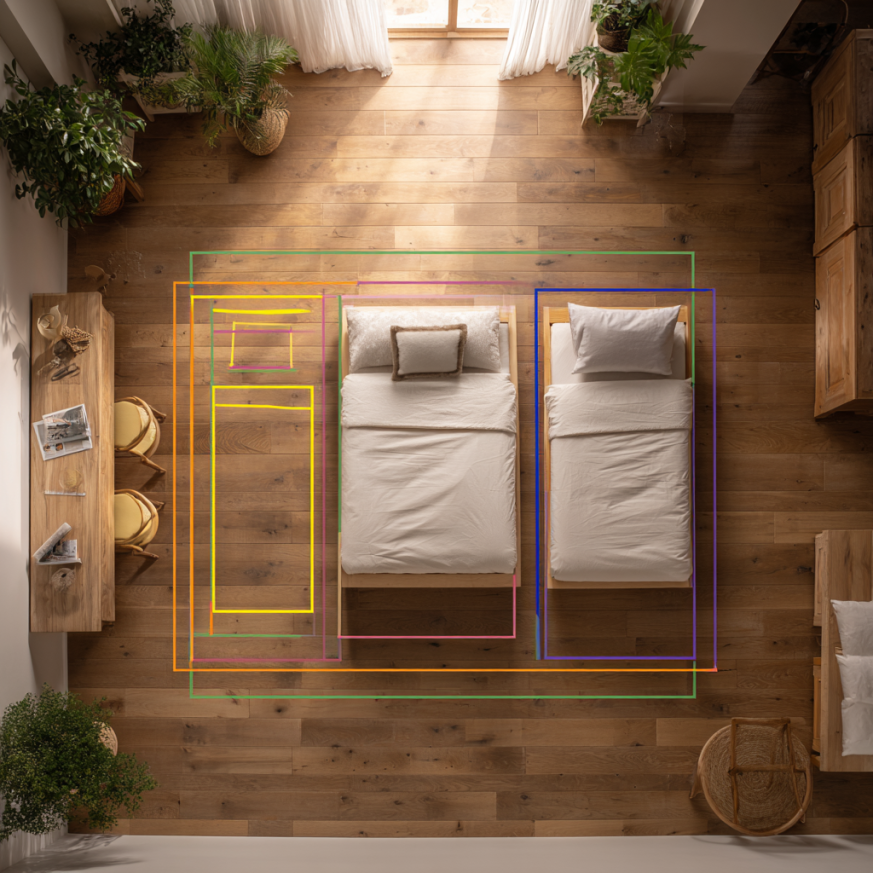
Full Bed (Double)
Answer first: A wider single-sleeper upgrade that fits small apartments and guest rooms.
- Dimensions: 54″ x 75″
- Best for: Single adults, guest rooms
- Pros: More width than Twin; still compact
- Cons: Tight for two adults
Full works when you want to stretch without dominating the room. Compare how Full stacks up against larger bed sizes in Sleep Foundation’s guide
(Mattress Sizes 101).
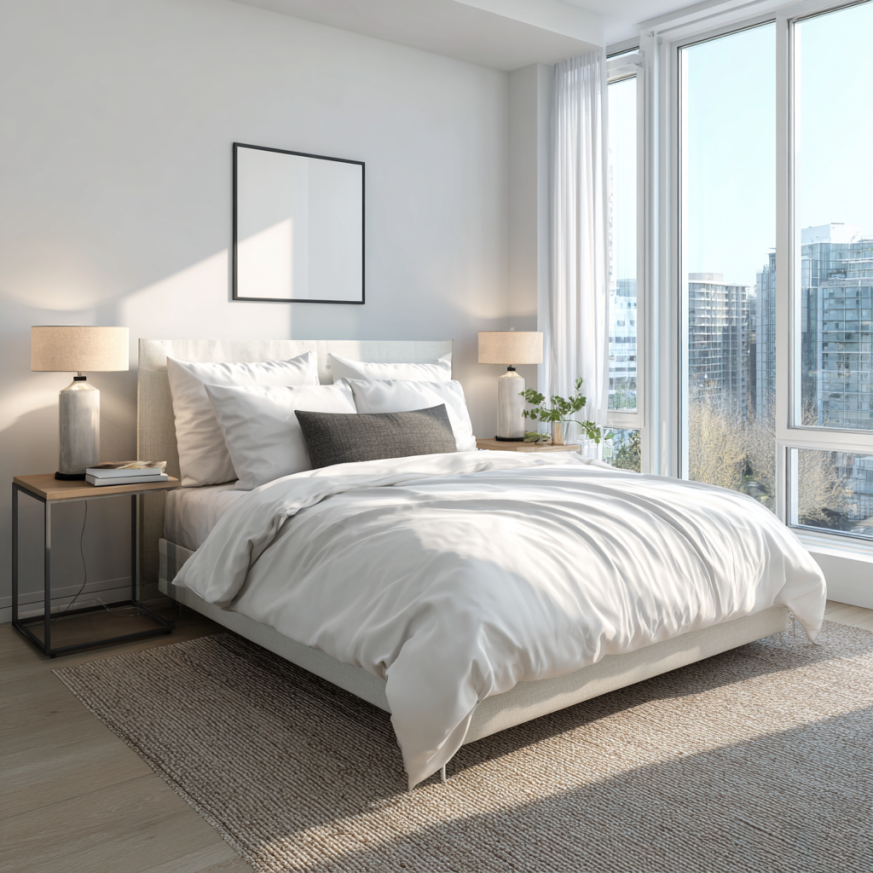
Queen Bed
Answer first: The most popular balance of footprint, comfort, and cost for couples.
- Dimensions: 60″ x 80″
- Best for: Couples, spacious single sleepers, main bedrooms
- Pros: Widely available, affordable accessories
- Cons: Can feel snug for two larger sleepers or with pets
If your bedroom is at least 10′ x 10′, a Queen usually fits with nightstands and a dresser. For deeper context on Queen vs. King bed sizes, see Sleep Foundation’s comparison
(Queen vs. King).
King Bed
Answer first: Best for couples who want maximum personal space or co-sleep with kids or pets.
- Dimensions: 76″ x 80″
- Best for: Couples, families with kids/pets
- Pros: Widest standard mattress; reduces sleep disturbance
- Cons: Higher cost; larger room required
A King shines in bedrooms ~12′ x 12′ or larger. For dimensions and buying tips, check Sleep Foundation’s King overview
(King Size Bed Dimensions).
California King Bed
Answer first: Longer and slightly narrower than King—ideal for tall sleepers.
- Dimensions: 72″ x 84″
- Best for: Tall couples, premium master suites
- Pros: Extra legroom
- Cons: Less width than King; fewer bedding options
If your feet hang off shorter bed sizes, Cal King adds the length you need. Cross-check bedding dimensions with Parachute’s size guides
(Duvet Covers).
Bed Frame Dimensions and Smart Considerations
Answer first: Frames add bulk; plan for 2–6 extra inches in both directions and check height for mattress + topper.
- Platform beds: Streamlined look, often with storage. Great for small rooms.
- Adjustable bases: Pair wonderfully with Split King Twin XLs for independent settings.
- Box spring frames: Traditional feel; check total height for ease of getting in/out.
Use this Sleep Foundation overview to estimate common frame footprints for standard bed sizes
(Bed Frame Sizes).
Choosing the Right Mattress Size for Your Needs
Answer first: Match your sleep style and body type to the space you have, then validate bedding availability and budget.
- Measure your space: Aim for ~24 inches of walkway around the bed.
- Think ahead: Pets, partners, and kids influence ideal bed sizes.
- Balance comfort with style: Choose frames and eco-conscious sheets that suit your look and values.
For a deeper dive into sleep-friendly setups, see our
Ultimate Sleep Guide and Creating the Ideal Sleep Environment.
Standard Bed Size Chart for Easy Reference
| Bed Size | Dimensions (inches) | Best For |
|---|---|---|
| Twin | 38 x 75 | Kids, small rooms |
| Twin XL | 38 x 80 | Tall teens, dorms |
| Full | 54 x 75 | Single adults, guest rooms |
| Queen | 60 x 80 | Couples, main bedrooms |
| King | 76 x 80 | Couples needing more space |
| California King | 72 x 84 | Taller people, spacious rooms |
Takeaway: Use this chart to compare bed sizes quickly while planning layouts and purchases.
Custom & Oversized Bed Sizes
Answer first: Oversized options deliver luxury and co-sleeping comfort, but require careful planning for frames and bedding.
- Oversized families & luxury: Alaskan King (108″ x 108″), Texas King (80″ x 98″), Wyoming King (84″ x 84″).
- Split configurations: Split King (two Twin XL) or Split Queen for adjustable bases and personalized firmness.
- Unique shapes: Round or extra-wide designs become statement pieces—verify custom bedding availability.
Learn more in our
Custom Bed Sizes Guide.
Buyer’s Guide: Room Fit, Materials & Certifications
Answer first: Validate space, then choose materials that match your comfort and values—look for credible certifications.
- Materials: Memory foam for pressure relief; latex for durable bounce; hybrids blend coils + foam. Pair with organic bedding and sustainable bedding for lower impact.
- Cooling & support: Side sleepers often prefer plusher feels; back/stomach sleepers lean firmer.
- Depth matters: Check fitted-sheet pocket depth for your mattress height; Parachute’s guides list standard pocket sizes
(Fitted Sheets). - Certifications to know: Look for OEKO-TEX® for textiles, GOTS for organic cotton, and CertiPUR-US® for foam safety claims where applicable.
- Budget & longevity: Larger bed sizes cost more in bedding, frames, and moves—plan total ownership costs.
Keep optimizing your sleep space with:
Feng Shui Principles for Bedroom Layout,
10 Sleep Hacks for Falling Asleep Faster, and
Deep Sleep Optimization.
FAQ
- What is the most popular bed size?
- The Queen is the most popular because it balances footprint, comfort, and cost while fitting most primary bedrooms.
- Which bed size is best for couples?
- Queen works for many couples, but King minimizes motion transfer and crowding—especially with pets or tall sleepers.
- What bed size is best for a small room?
- Choose Twin or Full for compact spaces and leave ~24 inches of walkway on at least two sides for easier movement.
- Do frames change the required space?
- Yes. Plan for an extra 2–6 inches in both directions for frames, headboards, and bedding layers, regardless of standard bed sizes.
Final Thoughts
The right bed sizes decision blends comfort, room flow, and future-proofing. Measure carefully, consider who shares your bed, and verify bedding availability before buying.
If you want a personalized recommendation, explore more tips at Cozy Bed Quarters.
Related Reading
- Creating the Ideal Sleep Environment (CBQ)
- Feng Shui Principles for Bedroom Layout (CBQ)
- Ultimate Sleep Guide (CBQ)
- Sleep Foundation — Mattress Sizes 101
- Sleep Foundation — Bed Frame Sizes
- Parachute Home — Fitted Sheet Size Guide

